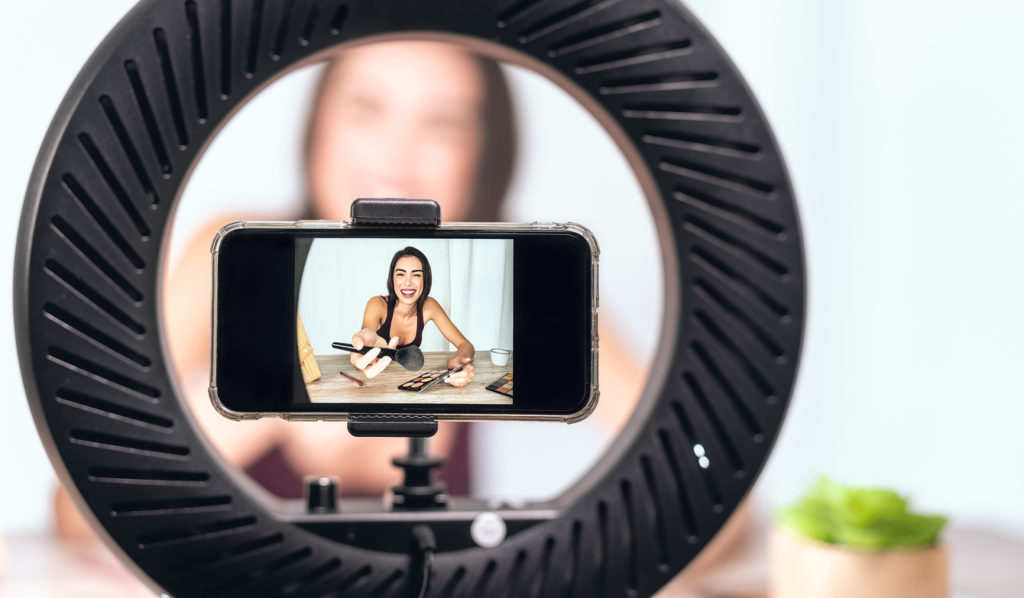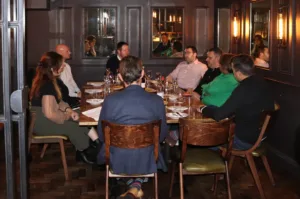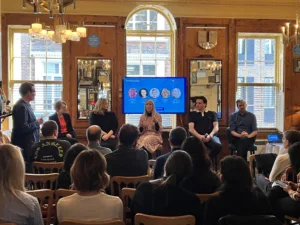Creativity – and its importance – is something that has been spoken about for many years within advertising. Who can forget the days when we had the creativity versus data debate? We’ve come a long way since then, and the role that creative has in advertising is no longer questioned.
The world of digital advertising has changed.
“We’ve moved from this age of static product packshots, and their white backgrounds, into an era where – in order to capture users’ attention – brands have to be entertaining,” said Kris Boger, General Manager, UK, Global Business Solutions at TikTok, during an exclusive roundtable session.
While brands have to focus on providing entertainment value for consumers, they also have to ensure that they are achieving the outcomes they are looking for. And this has become more challenging because “attention is harder to come by and results are harder to achieve,” according to Boger.
Michael Malinsky, Wonderskin CEO, later added, highlighting the importance of “thumb-stopping” content, and making any purchase options easy within that content: “Users are just clicking away and forgetting, ‘oh, I saw something shiny. I got a notification. A friend messaged me’. It’s not even just within the platform, it’s the 100,000 inputs that we all get bombarded with daily. So, the ability to keep the person in the funnel and convert is tactically very important. Any extra step you add, even if it’s a visit to your own website, is actually a point of abandonment.”
TikTok, since introducing advertising to the platform four years ago, has set out to provide advertisers with a platform to capture this attention. But it hasn’t been easy to achieve “whilst balancing this Venn diagram of creators, users, and advertisers,” explained Paul Mears, Head of Growth Partnerships at TikTok.
“They have a kind of symbiotic relationship, because creators need to monetise and make a living, users need to see good quality advertising that isn’t spammy, and our advertisers need to see good ROI. It’s very much a virtuous circle.”
Putting on a performance
According to the platform, despite the juggling act, it’s managed to reach a point where a third of its users are willing to make a purchase because they find the content entertaining. It also found that 79% of TikTok purchases, where the user has self-declared, were not attributed in traditional attribution systems and there was a 76% uplift in attributed conversions that weren’t attributed before.
For Marleen Kubits, Global Performance Marketing Manager at Bolt, the key to achieving real performance on TikTok – and on any other channels – is that “you need to talk the language of the people on the platform.”
In order to speak this language consistently, the ride-hailing platform is finding ways to bring its different marketing teams closer together, so that creative and performance go hand-in-hand across their activities.
“Our team is currently working on working together more with the social team and brand team to bring more creativity into our performance activities and put more performance into our creative activities,” said Kubits.
GroupM’s UK Paid Social Operations Director, Fred Barnes, has noticed that an increasing number of the agency’s clients are moving toward performance on TikTok over the last 12 to 18 months.
“We’ve had more and more advertisers dipping their toes into performance. But it’s been quite nice that their first taste of the platform was a creative taste of the platform, so they’ve been able to bring that with them as they morph into a more full-funnel approach to the platform,” Barnes shared.
Authentic influence
One of the big ways to unlock creativity is by working with influencers – or content creators – to promote the brand. With this, according to all of those on the roundtable, authenticity needs to be at the centre of any relationships formed.
“The users have a bullshit detector now. Authenticity, in its purest definition, is a path to try to follow,” said Malinsky.
In response to this, GroupM has noticed that more brands are starting to realise this, and being more intelligent about their approach to working with influencers.
“We’ve seen a few more of our brands doing long-term partnerships to get around that bullshit detector,” added Barnes. “If you choose your content creator wisely, and have a long-term partnership, that can add real value to the brand.”
Bolt finds this authenticity by working predominantly with content creators with smaller followings, as opposed to the leading names. However, striving for authenticity still comes with its challenges.
“We don’t work with big influencers usually. We’ve found that micro-influencers work pretty well. I think the key is to give them enough freedom, but still with some crucial points that they need to cover,” said Kubits.
“The only tricky part we’ve found is that, to be successful, you need to focus on the content looking very authentic. But, on the other hand, if it’s too authentic, how are people going to remember the brand later?”
Whether working with influencers or not, the key, according to Boger, is focusing on “how do we make a valuable, interesting experience?”









